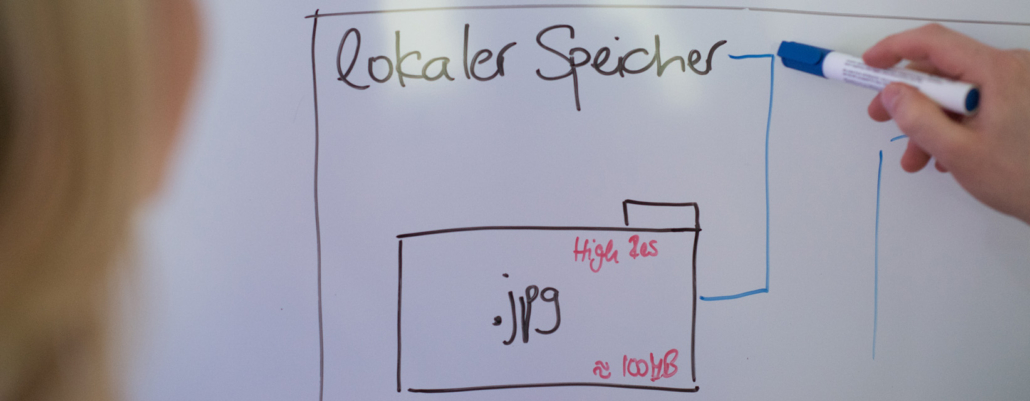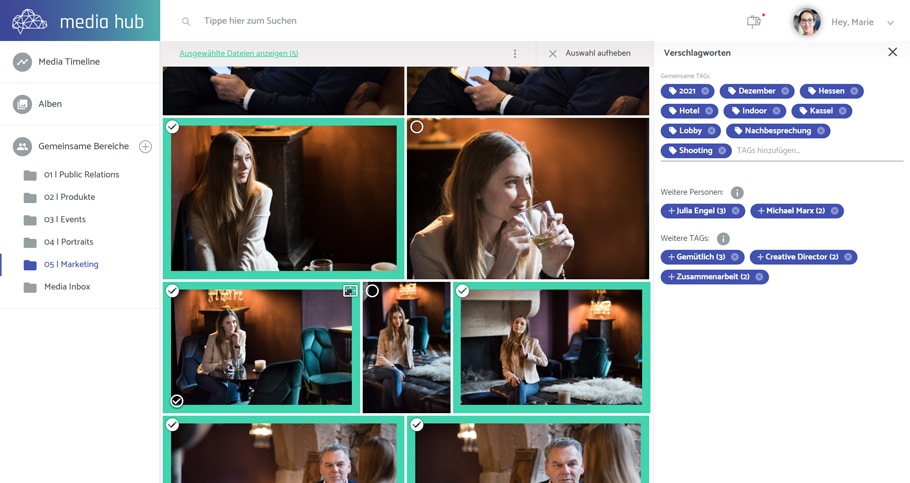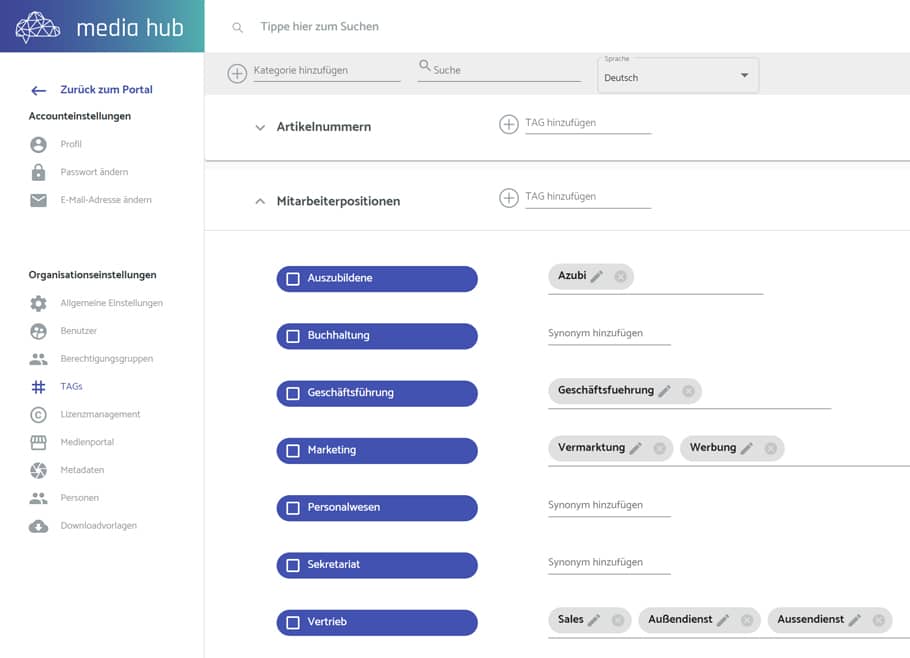By working out your individual data structure, you lay the foundation for the long-term success of your own image database. Therefore, it is crucial in this phase to get as heterogeneous an opinion as possible from future users from different areas of your company. This not only validates the data structure, but also increases the acceptance of the internal database among your colleagues.
Depending on the content focus, the top-level data structure of your image database could look like this:
1. Chronological sorting (e.g. season / competition in professional sports)
-
- Bundesliga season 21/22
- Cup games season 21/22
- Friendlies season 21/22
- etc.
2. Organizational areas (e.g. city administration)
-
- Unit I
- Unit II
- Unit III
- etc.
3. Product or article groups
-
- Product group A
- Product group B
- Product group C
- etc.
4. Content structure
-
- Press conferences
- Products
- Projects
- Logos and templates
- etc.
There is no right and wrong when creating the data structure, as long as the new structure fits your organization.
Once the filing structure for your own image database has been created, the next step is to build up the keyword catalog so that you can add supplementary information to your images.

 https://www.teamnext.de/wp-content/uploads/2022/04/grosse_dateien_versenden.jpg
640
1644
Björn Buxbaum-Conradi
https://www.teamnext.de/wp-content/uploads/2022/03/teamnext-mediahub-logo-bunt.svg
Björn Buxbaum-Conradi2022-04-25 17:29:412024-04-09 11:09:49How to send many files, or better: how to send large files
https://www.teamnext.de/wp-content/uploads/2022/04/grosse_dateien_versenden.jpg
640
1644
Björn Buxbaum-Conradi
https://www.teamnext.de/wp-content/uploads/2022/03/teamnext-mediahub-logo-bunt.svg
Björn Buxbaum-Conradi2022-04-25 17:29:412024-04-09 11:09:49How to send many files, or better: how to send large files




